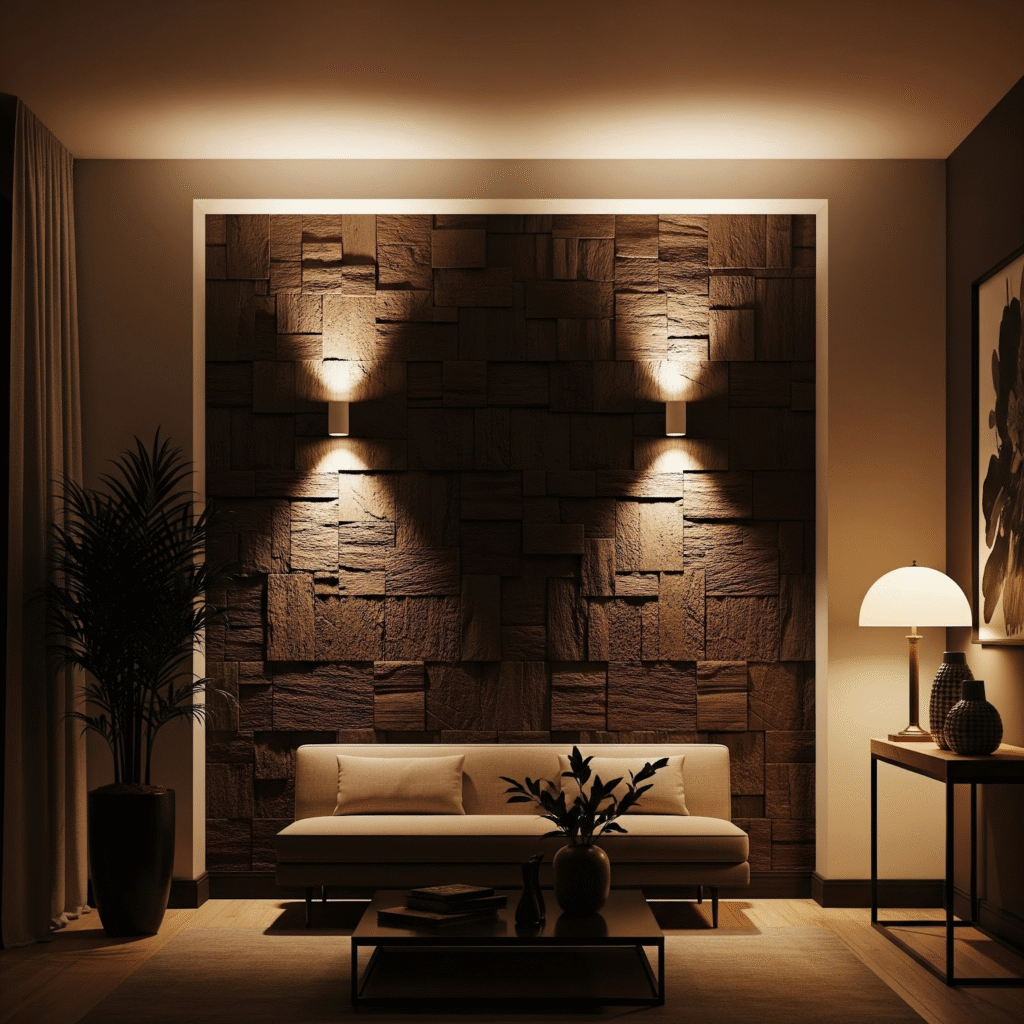How to choose statement walls that elevate your entire space
Posted on Sat, 4 Oct 2025 by Guest
When it comes to creating a space that truly reflects your style, most people think of furniture, lighting, or home flooring as the main design decisions. While these elements are important, walls are often the unsung heroes of interior design, and the right statement wall can completely transform your home. A statement wall, also known as a feature wall, is your opportunity to inject personality, colour, and texture into a room without overwhelming the entire space.
From bold colours to textured panels, the right choice can add depth, balance, and even change how big or small a room feels. But choosing one that elevates your home rather than clashes with it requires a little thought and planning.
Understanding the purpose of a statement wall

Before you start browsing paint swatches or wallpaper samples, ask yourself what you want your statement wall to achieve. Is it meant to bring warmth to a living area? Add drama to a bedroom? Highlight a unique architectural feature?
A well-chosen statement wall can:
- Draw the eye to a focal point in the room
- Enhance the existing colour scheme
- Create a sense of depth and dimension
- Reflect your personal style without overpowering the space
The clearer your goal, the easier it will be to narrow down your options.
Colour as a statement

One of the simplest and most affordable ways to create a statement wall is with paint. Bold, saturated colours can add drama and depth, while softer shades bring a sense of calm and relaxation. The key is to select a colour that complements your existing décor rather than competes with it.
If your home flooring features warm timber tones (whether natural hardwood or Luxury Vinyl Plank (LVP), rich earthy hues like terracotta, olive green, or deep gold can create a cohesive and inviting atmosphere. LVP is particularly versatile, as it comes in a wide variety of shades and finishes that mimic everything from rustic timber to sleek modern surfaces, giving you plenty of flexibility when choosing wall colours. For lighter flooring styles, including pale oak or grey-toned LVP, cooler shades such as navy, charcoal, or teal can provide contrast while keeping the design balanced and intentional.
Textures and finishes
When creating a feature wall, colour is only part of the story, texture can be just as powerful. By introducing tactile surfaces, you instantly add depth, character, and personality to a room. Natural finishes such as timber, stone, or brick lend warmth and authenticity, while modern options like 3D wall panels, polished concrete, or textured wallpaper bring sophistication and impact. T
he right finishes don’t just enhance the wall itself; they also complement your furniture, lighting, and flooring to create a cohesive look. Textures can even shift the mood of a space – earthy, organic surfaces encourage a cosy, welcoming feel, whereas smooth and sleek finishes evoke a contemporary, open atmosphere. By experimenting thoughtfully with different textures, you can transform a flat wall into a striking focal point that elevates the overall style and ambience of your home.
Popular texture options
- Wallpaper with patterns, metallics, or botanical prints for a bold visual hit
- Timber panelling for warmth and character
- Stone cladding to add natural texture and depth
- 3D wall panels for a modern, architectural feel
Mixing textures with colour can create even more interest. For example, a navy-painted timber panel wall in a dining room can feel both sophisticated and cosy.
Using patterns effectively
Patterns can instantly energise a space, but they need to be handled with care. Large-scale geometric designs can make a strong statement in a contemporary home, while delicate florals or damask prints might suit a more traditional setting.
To keep things balanced, limit bold patterns to one wall and pair them with simpler, solid-coloured furnishings and accessories. This will prevent the space from feeling too busy.
Lighting your statement wall

The way you light a statement wall can dramatically influence its impact. Spotlights, wall sconces, or even LED strip lighting can help highlight texture and colour, especially in the evening.
For example, stone cladding takes on new life when lit from above, with shadows enhancing its texture. Similarly, a wallpapered wall can pop under soft, diffused lighting that draws attention to its patterns.
Coordinating with the rest of the room
A statement wall should feel like part of the overall design, not an isolated feature. Pull colours or textures from the wall into other elements of the room, such as cushions, artwork, or rugs. This creates visual harmony and ensures the wall complements rather than dominates the space.
It is also important to think about proportion. If your statement wall is bold and colourful, balance it with more neutral tones in the rest of the room. Conversely, if the wall is more understated, you can afford to use bolder accents elsewhere.
Making your statement wall work for your home
Choosing the right statement wall is all about balance, cohesion, and purpose. Whether you opt for bold colour, rich texture, or a striking pattern, the key is to ensure it complements your home flooring, furnishings, and overall style. Done well, a statement wall does not just change how a room looks, it changes how it feels. That is the true power of thoughtful interior design.

